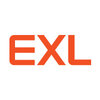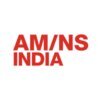

Jaiprakash Power Ventures



10+ Jaiprakash Power Ventures Interview Questions and Answers
Q1. Type of Excitation system in generator.
The type of excitation system in a generator determines how the generator is powered and controlled.
There are mainly two types of excitation systems: static excitation system and brushless excitation system.
Static excitation systems use a separate DC power source to provide the field current to the generator.
Brushless excitation systems use the generator's own output to power the field winding.
Each type of excitation system has its own advantages and disadvantages in terms of...read more

Q2. How Buchholz Relay operate.
Buchholz Relay is a protective device used in oil-filled transformers to detect faults such as internal arcing or overheating.
Monitors oil flow in transformer
Detects faults like internal arcing or overheating
Triggers alarm or trips circuit if fault detected

Q3. HP Lp bypass system how it work
HP Lp bypass system is a feature in HP printers that allows the printer to continue printing even if one of the ink cartridges is empty.
HP Lp bypass system is designed to prevent printing from stopping due to an empty ink cartridge.
When the printer detects an empty cartridge, it automatically switches to the bypass mode and uses the remaining cartridges to continue printing.
This feature is particularly useful in situations where a user needs to print an urgent document and do...read more

Q4. How much Condenser vacuum maintain
The condenser vacuum should be maintained at a level between 28-29 inches of mercury.
The vacuum level is important for efficient operation of the condenser.
The ideal vacuum level is between 28-29 inches of mercury.
If the vacuum level is too low, it can cause reduced efficiency and increased energy consumption.
If the vacuum level is too high, it can cause damage to the condenser.
Regular monitoring and maintenance of the vacuum level is necessary for optimal performance.

Q5. Difference between pressure relief and pressure reducing valve
Pressure relief valves protect systems from overpressure, while pressure reducing valves reduce pressure to a desired level.
Pressure relief valves open to release excess pressure and prevent damage to the system
Pressure reducing valves maintain a constant downstream pressure by reducing the incoming pressure
Pressure relief valves are typically set to open at a higher pressure than the system's operating pressure
Pressure reducing valves are typically used in applications where...read more

Q6. What is scoop control
Scoop control refers to the process of managing the amount of material being scooped or loaded onto a vehicle or machine.
It involves monitoring the weight and volume of the material being loaded.
Scoop control is important for ensuring safety and preventing overloading.
Examples of machines that use scoop control include excavators, bulldozers, and front-end loaders.

Q7. Draw the hydraulic circuit of hydraulic function.
A hydraulic circuit is a system that uses pressurized fluid to power machines and equipment.
Hydraulic circuits consist of a pump, valves, actuators, and fluid lines.
The pump pressurizes the fluid and sends it through the lines to the actuators.
Valves control the flow and direction of the fluid.
Actuators use the fluid to generate force and perform work.
Examples of hydraulic circuits include excavators, cranes, and hydraulic presses.

Q8. Explain reheater protection?
Reheater protection is a safety measure to prevent damage to the reheater in a power plant.
Reheater protection is necessary to prevent overheating and damage to the reheater.
It involves monitoring the temperature and pressure of the reheater and shutting down the system if necessary.
Reheater protection can be achieved through the use of sensors, alarms, and automatic shutdown systems.
Examples of reheater protection systems include thermal switches, thermocouples, and pressure...read more


Q9. What is hydraulic machine
Hydraulic machines use fluid power to perform mechanical tasks.
Hydraulic machines use a liquid, usually oil, to transmit power.
They are used in a variety of applications, including construction equipment, manufacturing machinery, and transportation systems.
Examples include hydraulic presses, cranes, and excavators.
Hydraulic machines are known for their high power density and ability to generate large forces.
They require regular maintenance to ensure proper function and preven...read more

Q10. What is the factor increase plant efficiency
Factors that increase plant efficiency include technology upgrades, maintenance practices, employee training, and energy management strategies.
Investing in technology upgrades to improve equipment performance and reduce energy consumption
Implementing regular maintenance practices to ensure equipment operates at peak efficiency
Providing employee training to optimize plant operations and reduce downtime
Implementing energy management strategies to reduce waste and improve overal...read more

Q11. Cold start procedure
Cold start procedure is the process of starting a system or machine from a completely shut down state.
Check power source and ensure it is connected properly
Turn on the machine or system
Check for any error messages or warnings
Allow the machine or system to warm up or stabilize before use
Perform any necessary system checks or tests before use

Q12. How is you letter writing
My letter writing skills are strong and professional.
I have experience drafting formal letters, emails, and reports in my previous roles.
I pay attention to detail, grammar, and formatting to ensure clear and effective communication.
I am able to tailor my writing style to suit the audience and purpose of the communication.
I have received positive feedback on my written communication skills from colleagues and supervisors.

Q13. How many fire ball in mhi boiler
The number of fire balls in an MHI boiler varies depending on the size and model of the boiler.
The number of fire balls in an MHI boiler can range from 1 to 8 or more, depending on the specific design and capacity of the boiler.
The size and capacity of the boiler will determine the number of fire balls needed to efficiently heat the water and produce steam.
For example, a smaller MHI boiler may have 1 or 2 fire balls, while a larger industrial boiler may have 6 or more fire ba...read more

Q14. Hydrollic diagnose
Hydraulic diagnosis involves identifying and fixing issues with hydraulic systems in diesel engines.
Check for leaks in the hydraulic system
Inspect hydraulic fluid levels and quality
Test hydraulic pressure and flow rates
Look for damaged or worn hydraulic components
Use diagnostic tools like pressure gauges and flow meters
Consult manufacturer's guidelines for troubleshooting
Consider potential causes such as air in the system or faulty valves

Q15. What is the coal pyrolysis
Coal pyrolysis is the process of heating coal in the absence of oxygen to break it down into simpler compounds.
Coal pyrolysis involves heating coal at high temperatures (typically 400-800 degrees Celsius) in the absence of oxygen.
During pyrolysis, coal breaks down into volatile gases, tar, and char.
The volatile gases can be used as fuel or chemical feedstock, while the tar and char can be further processed into various products.
Pyrolysis is a key step in the production of cok...read more

Q16. What is turbine heat rate
Turbine heat rate is a measure of how efficiently a turbine converts fuel into electricity.
Turbine heat rate is the amount of fuel energy required to produce one unit of electricity (typically expressed in BTU/kWh or kJ/kWh).
A lower heat rate indicates higher efficiency, as less fuel is needed to generate the same amount of electricity.
Factors affecting turbine heat rate include turbine design, operating conditions, and maintenance practices.

Q17. What is the CFR
CFR stands for Code of Federal Regulations, a set of rules published by the federal government of the United States.
CFR is a collection of regulations that govern various aspects of federal law in the United States.
It is organized by subject matter into 50 titles, each covering a specific area of law.
CFR is updated annually and is available online for public access.
It is used by government agencies, businesses, and individuals to understand and comply with federal regulations...read more

Q18. Explain Kirchhoff's law
Kirchhoff's law states that the total current entering a junction must equal the total current leaving the junction.
Kirchhoff's current law (KCL) is based on the principle of conservation of charge.
It is used to analyze electrical circuits and determine unknown currents.
Mathematically, KCL is expressed as the sum of currents entering a node equals the sum of currents leaving the node.





Top HR Questions asked in Jaiprakash Power Ventures
Interview Process at Jaiprakash Power Ventures

Top Interview Questions from Similar Companies









Reviews
Interviews
Salaries
Users/Month












